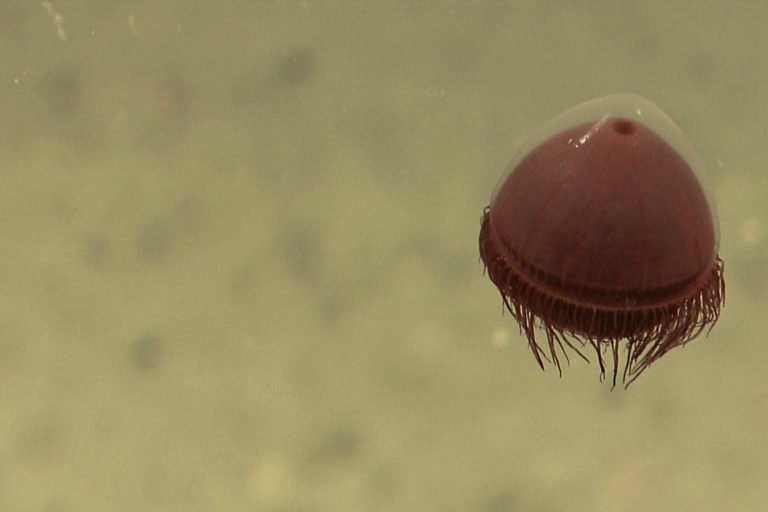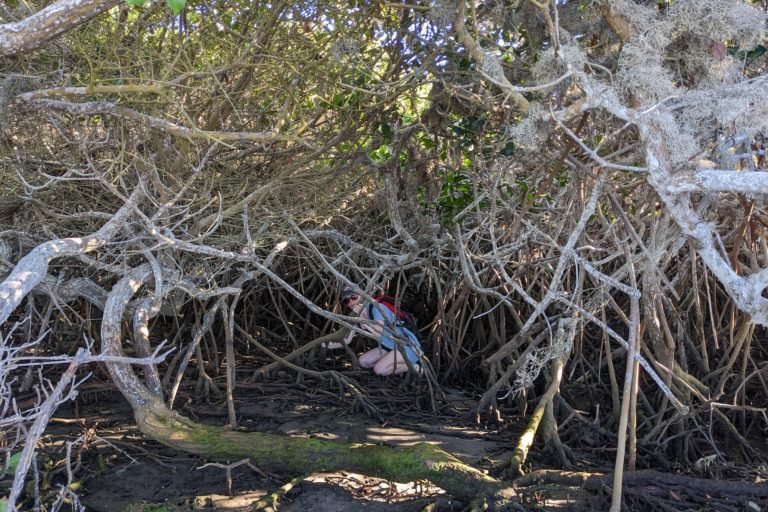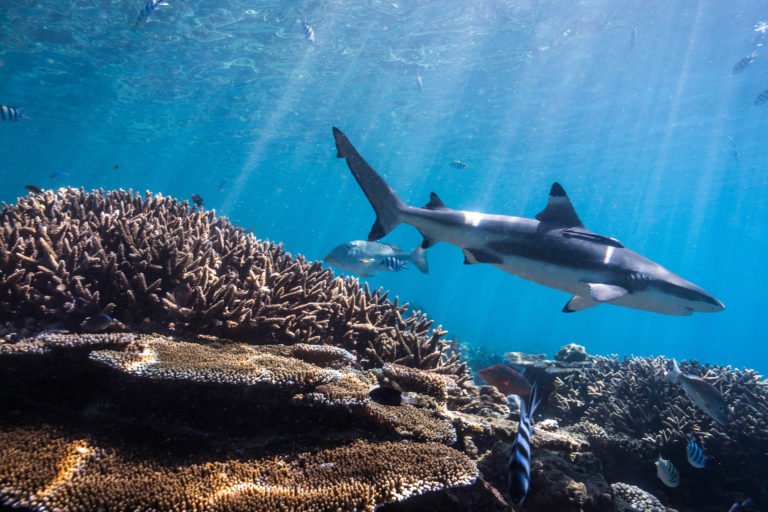- CITES CoP19 marked a historic win for shark conservation and the fight against the global trade in shark fins and meat, but an equally critical issue that must be tackled is shark culling.
- For many decades, popular culture and media, through the choice of words and visual depictions, have portrayed sharks as a threat to humans. Several countries actively kill sharks in mass numbers to control their presence near beaches.
- While shark nets and drumlines can separate the sharks from the humans at beaches, they aren’t fully effective. There are new methods that use technology, like electric shark repellents and magnetic and visual stimuli, work better to prevent human-shark encounters.
- This post is a commentary. The views expressed are those of the author, not necessarily Mongabay.
At CITES CoP19, also known as the World Wildlife Conference, 54 requiem shark species, including tiger and bull sharks, six hammerhead shark species and 37 species of guitarfish were added to Appendix II of the CITES Convention which would require the regulation and sustainable management of their trade. This is a landmark move because the shark species which now enjoy CITES protection collectively account for 95% of global shark fin trade.
It’s also critical because the population numbers of 18 out of 31 oceanic shark and ray species plummeted by 71% in the past five decades. Besides being hunted for their meat and fins, shark numbers have also been decimated by bycatch, ocean pollution, climate change and their deliberate killing to ensure greater safety for beachgoers.
Misleading portrayal of sharks
In popular culture, these apex predators are more known for attacking swimmers and surfers — incidents that dominate news headlines on the rare occasion they occur. A 2021 study of 109 shark-related movies from 1958 and 2019 found that all but one had portrayed sharks as a potential threat to humans, with plot summaries emphasizing the risk of shark attacks or people’s fear of the marine predators.
Language is indeed a powerful tool to sway public opinion. If sharks were portrayed in the same positive light as dolphins or whales, for example, there would certainly be a lot more public outcry over their relentless killing. Another recent study of media coverage of sharks has warned that the phrase “shark attack” could unintentionally undermine support for shark conservation programs by providing a one-dimensional portrayal of human-shark encounters and placing the unilateral blame on sharks.
While acknowledging the deeply personal and life-altering trauma that a single shark bite could cause, the research found that with more than one-third of shark incidents leading to no injury, the term could be misleading, and more nuanced words such as “incident,” “sighting” or “encounter” might be more suitable.
In reality, humans present a much greater danger to sharks than the other way around. The Florida Museum’s International Shark Attack File, the most comprehensive database of human-shark incidents, estimates that out of an average 70-100 shark attacks annually, around five would be fatal. Your lifetime risk of death by shark bites is lower than most other causes, including being struck by lightning or dying in a train crash. In contrast, humans are responsible for killing around 100 million sharks every year.
The devastating impact of shark culling
Yet, Australia, including the state governments of New South Wales and Queensland, South Africa and the French overseas territory, Reunion chose to introduce programs to deliberately kill and reduce the number of sharks to prevent potential attacks. So-called shark culling typically occurs either with the use of shark nets or drum lines which involve a buoy and a baited hook at the bottom.
Scientific studies have questioned the effectiveness of these shark control initiatives. The nets and drumlines can only ever cover a limited area while sharks are migratory species that would populate areas void of their kind, essentially rendering the culling efforts pointless. Sharks are still able to enter the beach area and in fact often get captured on their way back to the open ocean instead. Shark control programs are also often abused by politicians to give people a false sense safety and bolster their popularity with the electorate.
Shark nets and drumlines are death traps that do not discriminate between target and non-target species, many of them considered endangered. According to the Shark Culling Impact Tracker, over the last two decades, thousands of sharks and rays and hundreds of turtles, whales and dolphins were accidentally captured – and in many cases killed – in Queensland alone.

Non-lethal methods to prevent human-shark encounters
The last two decades saw substantial research go into developing more humane alternatives to shark culling which would protect both humans and sharks as well as the ecosystem around them. These non-lethal shark repellents aim to interfere with at least one of the many senses sharks rely on to detect their prey – their sight, smell, hearing or a special sense they have to detect electromagnetic fields.
As drone technology improves, aerial shark surveillance can help monitor shark activity and provide real-time alerts to warn swimmers or surfers of potential shark sightings or inform decisions to pre-emptively close beaches.
Scientists and conservationists have also been experimenting with designing so-called shark deterrent wetsuits, although it’s been challenging to test their effectiveness in discouraging sharks from coming too close due to the obvious difficulties of using human volunteers for these tests.
A special sensing organ in their snout called “Ampullae of Lorenzini” enables sharks to detect electrical currents given off by their prey, such as the heartbeat of a nearby fish. But when this organ is overstimulated, it spasms causing the shark to swim away. Based on this premise, electric shark repellents, such as NoShark, a device a worn around the ankle, or Shark Shield which offers bespoke solutions for surfers, divers, fishers and anyone involved in aquatic recreational activities, emit a high-voltage electric signal to turn sharks away.
Magnets have been shown to have a similar effect on sharks. Combining magnetic and visual stimuli, SharkSafe Barrier has a similar shape and structure to thick kelp forests – a type of large, brown algae which sharks typically avoid -, as well as permanent magnets installed to form a barrier that would deter sharks from passing through. A recent study has warned, however, that experiments so far have been too small in scale to provide a realistic representation of the barrier’s efficacy for large-scale deployment.
Ultimately, no company should claim to have a fool-proof solution to prevent human-shark encounters just as there is no scientific evidence to prove the effectiveness of shark culling. Importantly, while the deliberate killing of sharks must be stopped, it’s also important that non-lethal approaches are put through rigorous, large-scale, peer-reviewed scientific studies to test their efficacy.
Banner image: A reef shark in Fiji. Image by Tom Vierus / Ocean Image Bank.
Related audio from Mongabay’s podcast: The co-authors of our major investigative report that recently uncovered a massive, clandestine and illegal shark finning operation across the fleet of one of China’s biggest tuna fishing companies were interviewed, listen here:
Related reading:
Landmark bill will ban the shark fin trade in the US











